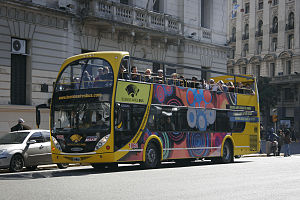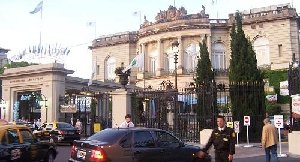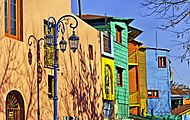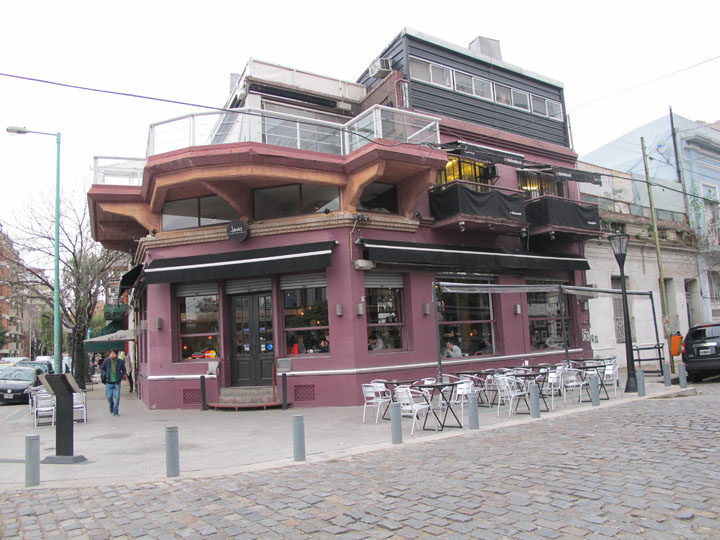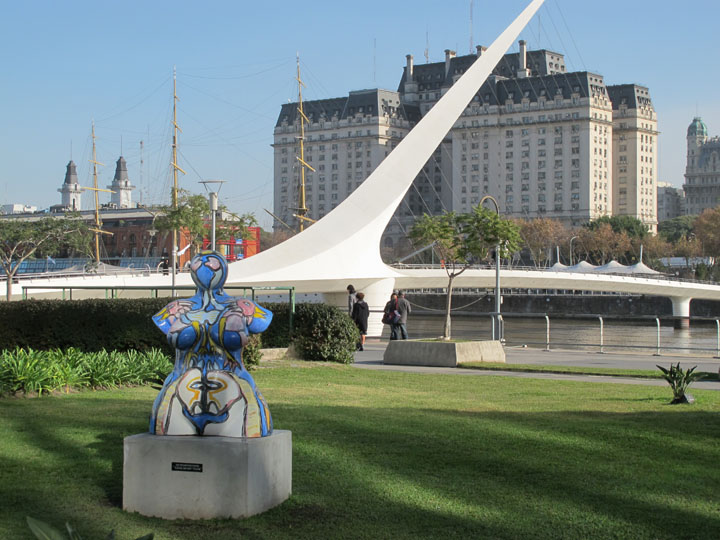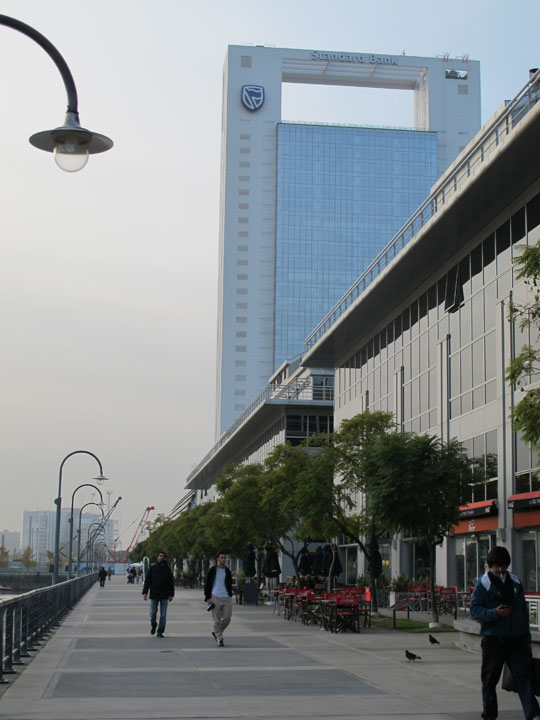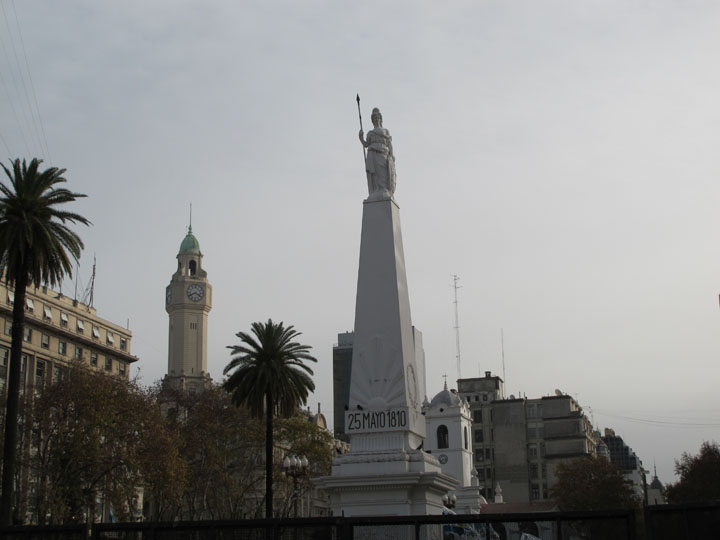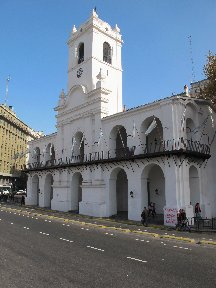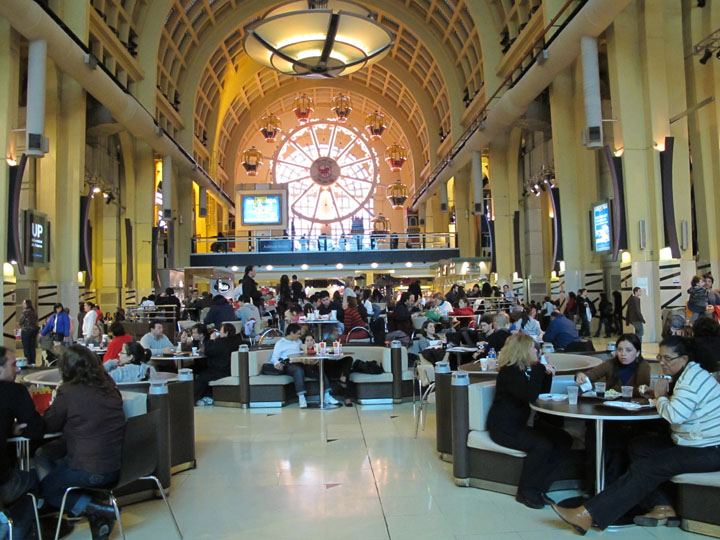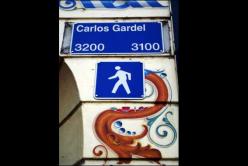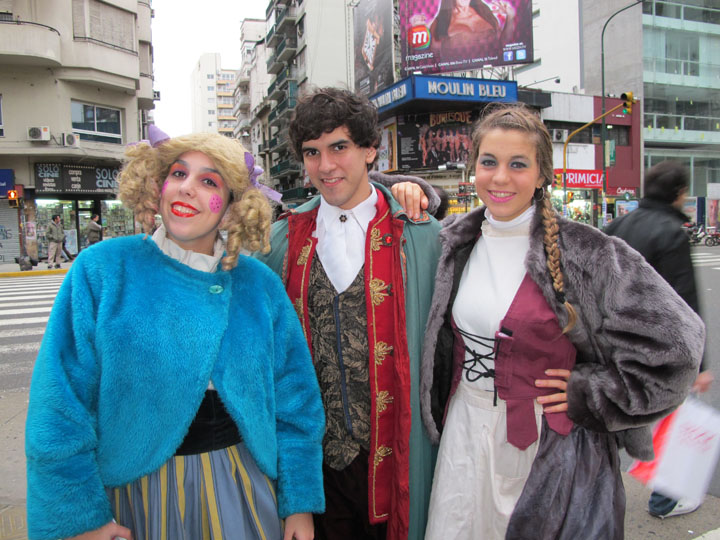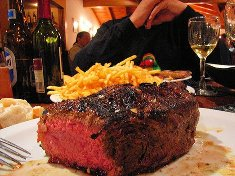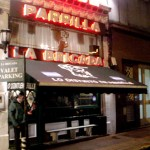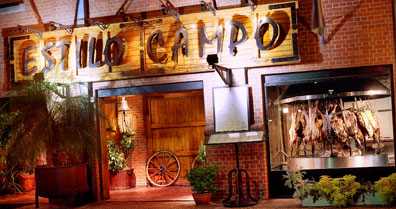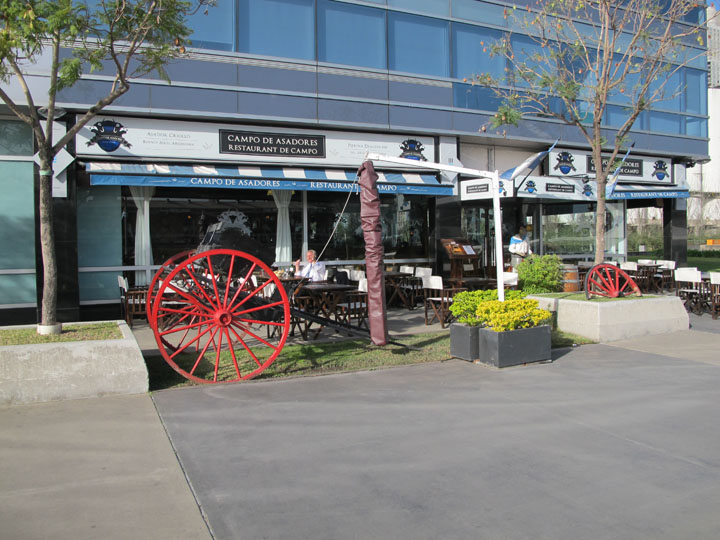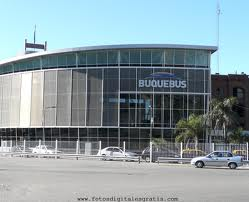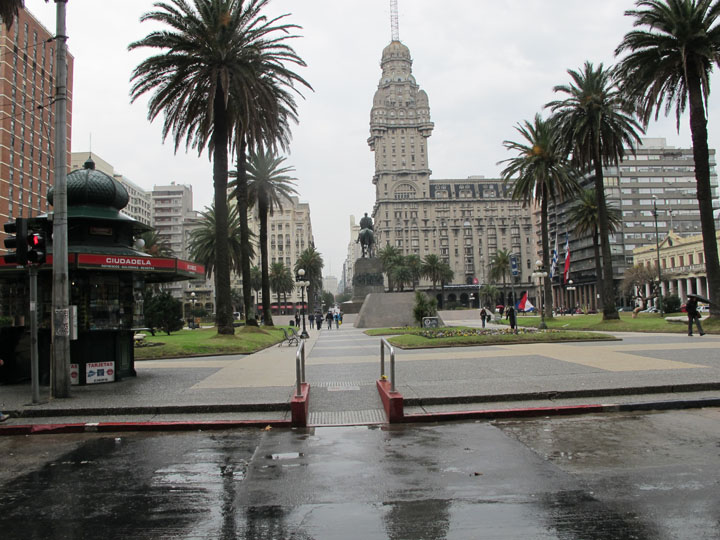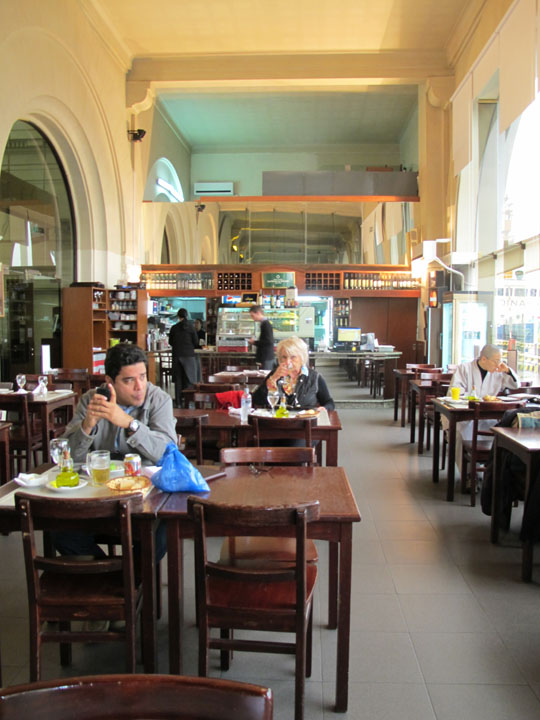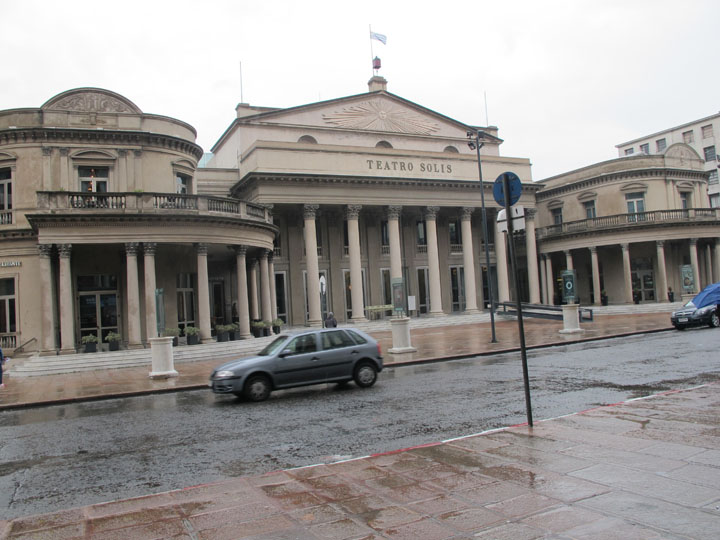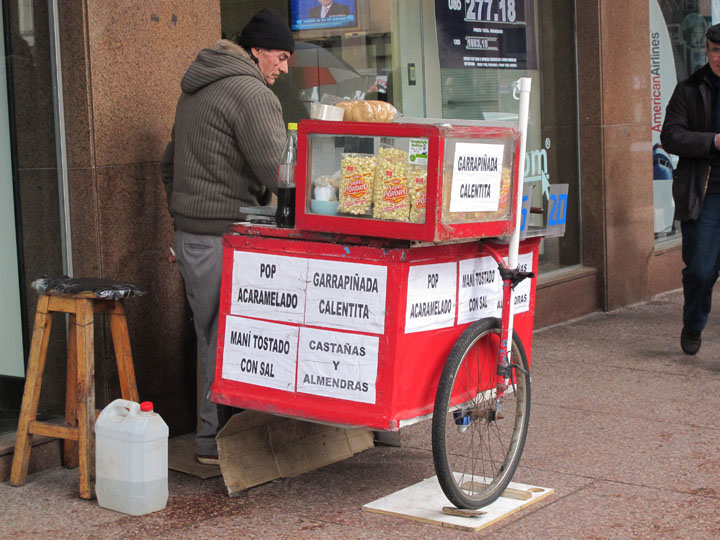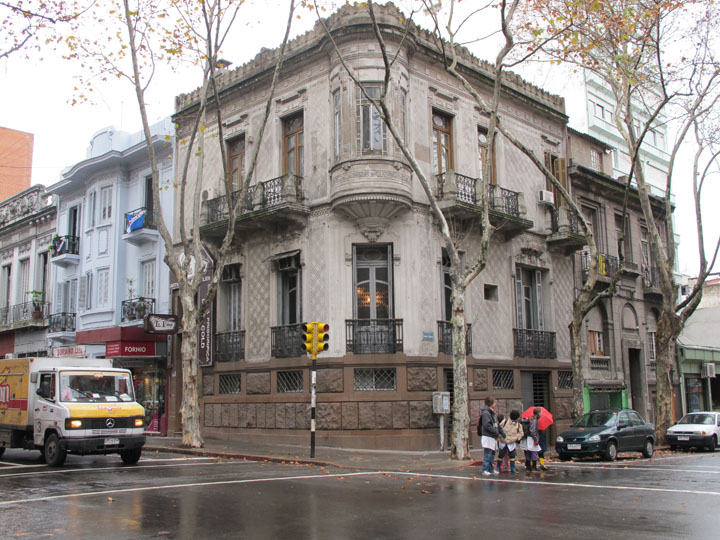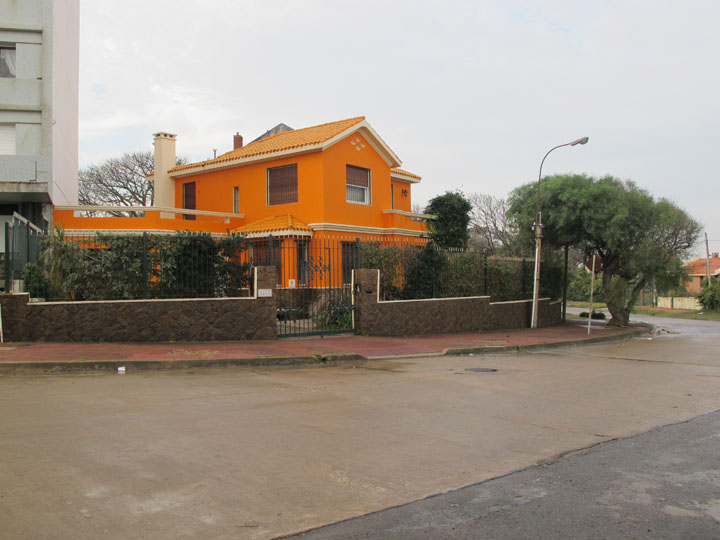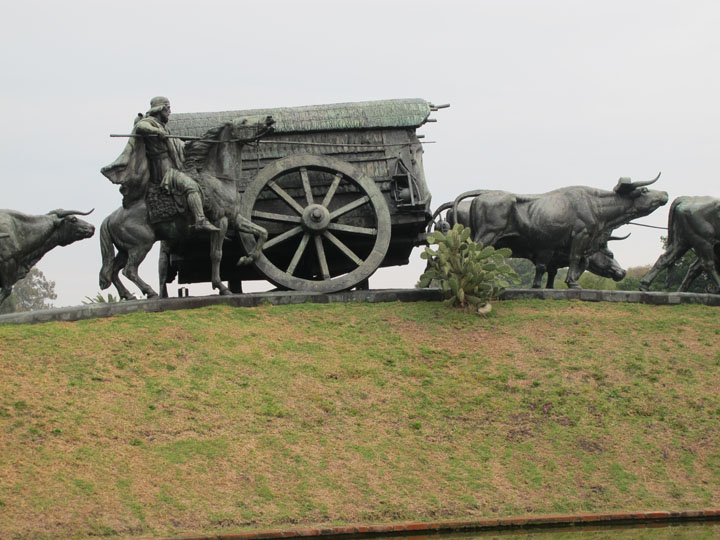|
Gourmet Corner N° 38 Buenos Aires – Argentina The Tango City Montevideo – Uruguay A Soap Opera City By Freddy Santamaria
Buenos Aires is one of the favorite capital cities in South America. It remains as one of the preferred destinations for people both from the region and from others parts of the world. Its museums and monuments, the parks and squares San Telmo’s colonial designs and Puerto Madero’s new architecture, large Palermo Woods, the shows and book shops, the nearness to the river (Rio de la Plata), tango, good food (the meat) and the elegant and cosmopolitan air that every visitor highlights.
Buenos Aires - Government Casa Rosada - Photo © Freddy Santamaria
Buenos Aires is the capital and largest city of Argentina and the second-largest metropolitan area in South America, after São Paulo. It is located on the western shore of the estuary of the Río de la Plata, on the southeastern coast of the South American continent. Greater Buenos Aires conurbation, which also includes several Buenos Aires Province districts, constitutes the third-largest conurbation in Latin America, with a population of around thirteen million. The city of Buenos Aires is not a part of Buenos Aires Province, not is it the Province's capital, but an autonomous district. In 1880, after decades of political infighting, Buenos Aires was federalized and removed from Buenos Aires Province. The
city limits were enlarged to include the towns of Belgrano and
Flores (both are currently neighborhoods of the city).
The 1994 constitutional amendment granted the city
autonomy, hence its formal name: Ciudad
Autónoma de Buenos Aires
(Autonomous City of Buenos Aires).
Its
citizens first elected a Chief of Government (i.e. Mayor) in
1996; before, the Mayor was directly appointed by the President
of the Republic.
People
from Buenos Aires
are referred to as porteños
(people of the port). Buenos Aires is a top tourist destination,
and is known for its European style architecture and rich
cultural life.
Buenos Aires Bus, the city's touristic bus service. The official estimate is that the bus carries between 700 and 800 passengers per day, and has carried half a million passengers since its opening. The best way to know Buenos Aires and start your first visit is with the “Touristic Bus Service” The tour includes 20 stops which are great tourist points in the City of Buenos Aires. The bus take you to all the neighborhoods, after that, you can decided to visit one by one or just the most interesting. Neighborhoods
Belgrano
(Tipa-lined
residential streets, Tudor architecture and numerous museums)
Belgrano
used to be one of the limits of the city. It was far from
downtown and many families had their country houses there,
surrounded by green gullies.
Today, it is a residential neighborhood
with apartment buildings, many embassies with wooded areas and
commercial zones.
Entrance
to Buenos Aires Hipodromo
Painted Houses in La Boca For your attention: It is NOT ADVISABLE to visit La Boca by night!!
Colorful Plaza Serrano in Palermo Viejo - Photo © Freddy Santamaria
Restaurante Janio (Palermo Viejo) - - Photo © Freddy Santamaria
Buenos Aires - Puente de La Mujer - Photo © Freddy Santamaria
Puerto Madero Walk - Photo © Freddy Santamaria Recoleta
(The
traditionally upscale district combines Parisian architecture
with trendy high-rises and a variety of cultural venues.) The
name of this neighborhood comes from an old Spanish
word meaning "to remember." Its history dates to the
late colonial period and the establishment of a convent where
Recoleta
Cemetery,
Evita's final resting place, now
sits.
Retiro
(Art
Nouveau cafés and restaurants among Art Deco office
architecture)
Retiro
is a barrio
(district) located in the northeast end of the city; Retiro
is bordered on the south by the Puerto Madero and San Nicolás
wards, and on the west by the Recoleta ward.
A Buenos Aires lady and her dog in Palermo - Photo © Freddy Santamaria
Buenos
Aires right now has an image of a “run-down” city,
with dirty streets (mainly in the center) and side-walks, full of
holes, very dangerous for walking!
Buenos Aires - Piramide de Mayo - Photo © Freddy Santamaria
Buenos Aires – Cabildo – Pl. de Mayo - Photo © Freddy Santamaria
Plaza
de Mayo
Area
This
is not so much a district as the historical and political heart
of the city, laid out by Don Juan de Garay in 1580 during the
second founding of the city. Abasto The area known as Abasto is officially within the neighborhood of Balvanera. This sector of Buenos Aires got its name from the former Mercado Central del Abasto, the wholesale produce market that thrived in what is now the Abasto Shopping mall. The original marketplace opened in 1893 in the rural outskirts of the city, but grew quickly into an immigrant neighborhood with brothels, tenement houses, cantinas and theaters.
Abasto
Shopping Mall & Carlos Gardel Statue - Photo
© Freddy Santamaria
The building was abandoned for 14 years and its surrounding neighborhood also suffered a decline Fortunately, the beautiful art deco building was salvaged and now contains a major shopping mall, Abasto Shopping. The inauguration of the mall in 1998 and the subsequent opening of a luxury hotel, tango theme restaurant, and other businesses revitalized the neighborhood. Today Abasto is characterized by its artistic and bohemian spirit, honoring not only Carlos Gardel and tango, but other art forms as well. Many of the alternative or “under” theaters are located in Abasto and its adjacent areas. The neighborhood continues to attract immigrant populations, most notably Bolivian and Peruvian communities. Abasto has a rich history and several places of interest to visit within just a few blocks.
Abasto Shopping Mall - Photo © Freddy Santamaria
Abasto Shopping - Avenida Corrientes 3247 - Tel.: 54-11 4959-3400 The facade of this mall (formerly a wholesale produce market) is one of the city’s architectural landmarks. The Abasto today contains over 250 shops, 12 movie theaters, an interactive educational museum, an amusement park and a large food court (Cheap, Junk food, People) Abasto
Plaza Hotel Statue Carlos Gardel It is located in the Pasaje Carlos Gardel (a passage) between Jean Jaurès and Anchorena Streets. On weekends you can enjoy of tango and folklore shows. In the corner of the cut road, named Carlos Gardel, and Anchorena Street, where it is today located the statue that immortalizes Gardel; there was a restaurant that housed within its walls the colorful characters of the market: the "Chanta Cuatro ". A silent witness to a unique story where Carlitos Gardel used to meet his friends and cronies for dinner, stay up late, singing, or ... just dawn.
Nowadays, at 3200 it is the La Esquina de Carlos Gardel (the corner of Carlos Gardel) a tangueria (a place where you can have dinner while enjoying a tango show) where the old bar “Chanta Cuatro” was located. Avenida Corrientes Avenida Corrientes (English: Corrientes Avenue) is one of the principal thoroughfares of the Argentine capital of Buenos Aires. The street is intimately tied to the tango and the porteño sense of identity. Like the parallel avenues Santa Fe, Córdoba, and San Juan, it takes its name from one of the Provinces of Argentina. The intersection of two of the city’s main thoroughfares, Avenida Corrientes and Avenida 9 de Julio, is one of Buenos Aires’ key epicenters, unmistakably marked by the tall Obelisco.
Though the entire length of Avenida Corrientes serves as an important traffic artery, it is the section between Avenida 9 de Julio and Avenida Callao that lights up the night, turning it into what is known as the “Broadway porteño”. The bright marquees of most of the large commercial theaters can be found on Avenida Corrientes. This theater district also has numerous smaller and alternative theaters on the adjacent streets. It extends 69 blocks from Eduardo Madero Avenue in the eastern Puerto Madero neighborhood to the West and later to the Northwest, and ends at Federico Lacroze Avenue in the Chacarita neighborhood. Automobile traffic runs from west to east. Line B of the Buenos Aires Metro runs most of its length underneath the street. The Asociación Amigos de la Calle Corrientes ("Friends of Corrientes Street Association") is a group that collaborates on the urban planning of the street. They have placed commemorative plaques on 40 street corners bearing the distinguished figures from the history of the tango.
Actors
from the theaters
promote their plays on the Avenue
The late night entertainment activity has led to restaurants, pizzerias and cafés that stay open until late into the night and several that open 24 hours a day. There are numerous dining options, from exclusive high end to more moderately priced family restaurants. Among the favorite places to eat are several classic pizzerias. Traditional Buenos Aires cafés also abound, many of which were patronized by famous artists and intellectuals of their day. Some feature the classic elegance of the early 20th century, while others highlight their bohemian spirit. A daytime walk along Avenida Corrientes, west of Avenida Callao, leads you into the “bookstore district”, where unusual literary treasures are waiting to be found within the many new and used bookstores. Avenida 9 de Julio Its 140 meter width classifies this avenue, inaugurated in 1937, as one of the widest in the world. Along its entire length, its islands are landscaped with statues, monuments, grass, plants and trees. The landscaping was done by Carlos Thays with 1,000 jacaranda, ceibo and cherry trees donated by Japan. Its most prominent attraction, the Obelisco, is a central gathering point for celebrations (such as soccer victories) and special performances. This impressive avenue is beautiful by day, but turns stunning when the city lights sparkle against the night sky. Obelisco This towering obelisk is a city landmark, measuring 67, 5 meters in height. It was constructed in 1936 in remembrance of the fourth centennial of the city’s first founding. On its four faces there are inscriptions detailing the city’s two founding’s, the designation of Buenos Aires as the nation’s capital in 1880, and the first raising of the national flag on the site of the former Iglesia de San Nicolás. Buenos Aires Hotels The city has & big choice of hotel possibilities, the most important point on the choice, beside the category of the hotel & the price, it is the location, as you read it on the introduction, the neighborhoods of Buenos Aires are very different, but all interesting. My recommendation goes for Puerto Madero, Retiro, Palermo and around the Obelisco (Avenida 9 de Julio & Corrientes). The best choice to be near good restaurants & bars, with no need to take taxis to go to your restaurant or bar, is Puerto Madero, other choice will be Palermo with “boutique hotels” and trendy bistro’s & bars, and if do you want the popular atmosphere of the city, the Obelisco it is the choice (located on the center) but you need to take taxis to go everywhere. Enclosed websites with the list of Buenos Aires Hotels Buenos Aires Hotels - Hotel Guide NetworkCached - Similar http://buenos.aires.hotelguide.net/
Rooms
1950 style, reception not friendly, service 0, and you need to
pay in advance the total price of your stay at “check in”
“Meat” is the most important element for your gourmet search, thecity has one of the biggest choices in the world for meat restaurants. Argentinean beef is supposed to be “one of the best you can taste”, (along with the “Kobe beef” in Japan).
Enjoy your meat
Bife
Ancho
–
A steak from the prime rib and part rib eye
This
classic San Telmo parrilla,
arguably
one of the best Parrilla in Buenos Aires depending on who you ask
along with La
Cabrera
and Cabaña
Las Lilas,
the place is a “tourist
attraction” and
if
you don’t protest,
you are treated as a tourist, even
with reservation, you are seated in a row of tables in the middle
of the restaurant on the first
floor,
not the best table sitting to sample your first meat dinner in
Buenos Aires. Refuse
the suggestion
and ask
for table N° 48,
one of the best where
you
can have a view of the restaurant scene. Try the “Empanadas de Carne” – “Bocadillos de Verduras” – t h e “deep-fried vegetables” and the deliciously antisocial “papas fritas provenzal” (garlic fries). For the meat sample the “Bife Especial” & the “Colita de Lomo”. For wine the “Cabernet Sauvignon” (Zuccardi) or the “Malbec” La
Brigada
(Since 1992)
– (Price
for two with wine around US$ 100.00)
Estados Unidos 465 – San Telmo –
Buenos Aires
Other meat restaurant located on the trendy neighborhood of Puerto Madero, with a typical Argentinean “spit” at the entrance, not so a tourist place. Estilo
Campo
–
(Price
for two with wine around US$ 90.00)
Alicia
Moreau de Justo 1840 – Puerto Madero – Buenos Aires
In
Puerto Madero you can find also international restaurants
with the mix of meat, fish & house specials; among them
I think the best is “Puerto
Cristal”:
A very large restaurant, with seating capabilities of 350
persons, “never
closed”
and open till 1:00 A.M. Owned by a Spanish family from (Lugo in
Galicia) since 1995. The “Lunch
Special”
can be only around US$
15.00.
Restaurants along Puerto Madero Walk – Photo © Freddy Santamaria If do you need more info on the Buenos Aires Restaurants; visit: The 5 Best Parrillas in Buenos Aires Buenos Aires Parrillas: The Ultimate Guide
Before I close the Buenos Aires Information, enclosed the advert you will find on the Argentinean webs addressed to people with little knowledge of the Spanish language
I think it is a good way to promote the language
Of course, if you visit Buenos Aires, remember you are only 3 hours away from Uruguay and its capital Montevideo The best way to visit Montevideo it is with the “Buquebus” the fast ferry connecting the two cities. (www.buquebus.com.ar)
Buquebus Terminal in Buenos Aires Direct
ship MVD (3 hr)
(TARIFFS IN ARGENTINE PESOS. ALL NATIONAL AND INTERNATIONAL, RATES AND TAXES ARE INCLUDED) For
many
tourists, there are only two reasons to visit Uruguay: beachy,
clubby Punta del Este and quaint, historic Colonia del
Sacramento.
Montevideo, the nation’s
relaxed capital on the banks of the Río de la Plata,
offers an eclectic mix of architecture and culture, but is often
relegated to the status of stopover.
Palacio Salvo – Plaza Independencia, Montevideo – Photo © Freddy Santamaria
1930’s décor at the restaurant of the Montevideo Ferry Terminal – Photo © Freddy Santamaria
The
traditional routine: start at the bar of Roldós with a
bottle of Medio y Medio, a mix of sparkling and dry wine that
serves as the mercado’s official beverage and, at around
120 pesos a bottle. Then switch to a Uruguayan red when
you sit down for a meal or the
Uruguayan steak sandwich that even in its plainest form comes
loaded with lettuce, tomato, egg and cheese
at one of the parrillada restaurants like La
Maestranza,
while skilled grill masters roast hunks of meat and, probably
just for show, the occasional green pepper. Lunch for two, with
wine, is about 750 pesos. Though
taxis are cheap, Indeed, if there is one building that is particularly well cared for, it’s the city’s cultural temple, the Teatro Solís. The theater, which dates from 1856, was renovated in 1998 and remains pristine.
Teatro Solis – Montevideo – Photo © Freddy Santamaria
The 1950s Ermitage Hotel - Juan Benito Blanco 783 www.ermitagemontevideo.com is an excellent value, with water-view rooms starting at $80. Tel: 598-2-710-4021 A more modern option is the Punta Trouville Apart & Suites Francisco Vidal 726 & Juan Maria Pérez 2957 – Tel: 598-2-712-0903 www.puntatrouville.com.uy Rooms, which are equipped with kitchenettes, start at $85 For upscale accommodations, the Belmont House in the Carrasco neighborhood (Riviera 6512 – Tel: 598-2-600-0430 www.belmonthouse.com.uy has doubles starting at $240. Most
Montevideo hotels are either big international chains or small,
locally run operations, some unchanged since the 1960s.
But the 21-room Don
Hotel,
opened in January 2011
in a 1938 nautical Art Deco building, is a new boutique choice.
Radisson Montevideo Victoria Plaza Hotel Plaza
Independencia Sheraton Montevideo Calle Victor Soliño 349 - Tel: (598) 02 7102121 The Sheraton Montevideo is the city's most luxurious hotel. A walkway connects the hotel to the Punta Carretas Shopping Center, one of the city's best malls. Spacious guest rooms have imported furniture, king-size beds, sleeper chairs, marble bathrooms, 25-inch televisions, and works by Uruguayan artists. Rooms on the top two executive floors feature Jacuzzis and individual sound systems. Hotel service is excellent, particularly for guests with business needs. The main restaurant, Las Carretas, serves Continental cuisine with a Mediterranean flair. Don't miss the dining room's spectacular murals by contemporary Uruguayan artist Carlos Vilaró.
Punta Carretas Shopping Center - Montevideo – Photo © Freddy Santamaria
Sheraton Four Points - Montevideo Ejido
1275 - Tel: (598) 02 9017000 -
www.fourpoints.com/montevideo
Buy your lunch on the street – Photo © Freddy Santamaria
Restaurants in Montevideo Enclosed list of the most interesting Restaurants in the city: *El Palenque Perez Castellano
1579
San
José 909 - Tel: (598) 02
900-2285
Rambla Gandhi
400 - Tel: (598) 02 710-5704
Isla
de las Flores 1900 - Tel: (598) 02 410-5188
Nice Old Houses in Montevideo – Photo © Freddy Santamaria
Bright New Houses in Montevideo – Photo © Freddy Santamaria
'The last Charrúas' and 'The Diligence.' – Photo © Freddy Santamaria
I think that you now have a very good panorama of both Buenos Aires and Montevideo!! Sorry I did not include any “tango” presentations, but “tango” is a feeling, and for that feeling you need to experience in person! ****************************************
Paris, France — December 12, 2011 For EDA Confidential: www.aycinena.com Copyright © 2011— Freddy Santamaria All rights reserved. |
|
|

